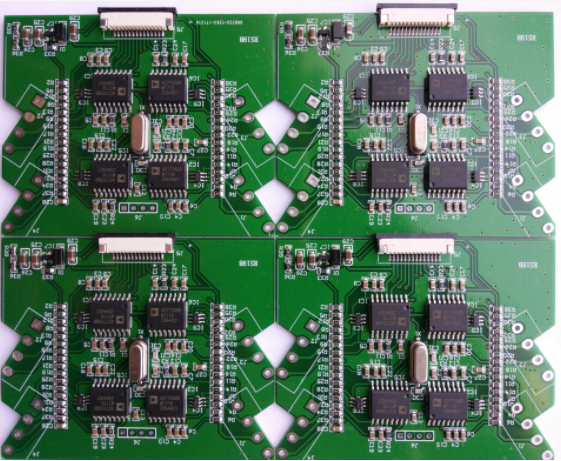1. The composition of the PCB board reflow curve (Profile)
When the assembled board is on a metal mesh or double-track conveyor belt, it passes through the hot and cold strokes of each section (Zone) of the reflow furnace (for example, a large machine with 8 heat and 2 cold, and a lead-free reflow furnace with a total length of 5-6m). To achieve the purpose of solder paste melting (melting) and cooling (Cooling) healing to become solder joints, the main temperature changes can be divided into four parts, namely:
(1) Starting preheating section (Ramp-up)
Refers to the first two sections of the furnace zone, starting from room temperature and reaching the saddle head of 110-120 degree Celsius (for example, Zone 1-2 of the 10-stage machine).
(2) Slow rise

(3) Spike or Peak
The temperature of the board surface can be rapidly increased (3 degree Celsius/sec) to between 235-245 degree Celsius to achieve the purpose of solder paste welding; this section should take no more than 20 seconds (for example, 7- of the 10-segment machine) 8 two paragraphs).
(4) rapid cooling section (Cooling)
Then quickly cool down (3-5 degree Celsius/sec) to instantaneously solidify to form solder joints, which will reduce the surface roughness and micro-cracks of the solder joints, and the aging strength will be better (for example, 9-10 sections of a 10-segment machine) ). In order to simplify the abstract text description into easy-to-understand and convenient illustrations, the vertical axis of simple rectangular coordinates is used to express the temperature, and the horizontal axis expresses the time (seconds). /min) The curve of temperature fluctuations (heat increase or decrease) during walking is called Reflow Profile.
The reflow curve is drawn by a mobile electronic thermometer and recorder (Profiler or Datalogger). This instrument can draw out several K Type heat wires and connect them to several thermo-couplers (Thermo-Coupler), Make it fixed at different positions on the board one by one, and execute the action of "walking while measuring" while moving. In practice, it is walking in the front, and then pulling the Qi Wen meter through the whole process to automatically draw multiple curves. Then, among the multiple curves, the one that does not damage the components is selected as the trial welding curve of the official product, and after the quality of the finished board is approved, the curve will be archived as the basis for subsequent mass production.
2. Surveying and mapping of circuit board reflow curve
Using defective PCB s and critical components, deliberately switch to high-temperature solder (Sn l0/Pb 90). First, manually solder the thermocouples on the pads on the board surface, as a temperature measurement before mass production. Test welding board used. The "mobile thermometer" used is mainly a flat box, and the inside is mainly an assembly board. A battery-driven IC is installed on the PCB board. The IC has been burned with special software. For the recording and sorting of various data. The metal shell is additionally covered with heat-resistant materials to protect the interior from damage. The flat host can monitor the temperature at any location at any time during the whole process (the error must be within ±10°C), and wirelessly transmit data quickly (about once per second) to a computer outside the furnace. High-temperature tape can also be used on the test board to stick the heat-resistant wire to avoid its disorder. The data obtained from the test welding can be drawn into multiple reflow curves in several colors, and then the best available curve can be found by weighing the trade-offs based on experience (that is, the most heat-resistant component examples are given priority).
Usually when replacing the material number of the board to be welded, the correct reflow curve should be found from the file, and then the first board (First Artic1e) should be welded on the machine again, and mass production can be started after the quality of the solder joints is worry-free. However, the general veteran does not use the dynamic thermometer for the first board of the new material number, but only uses the wired test board to verify and fine-tune the hot air temperature of each section before the daily start of work.